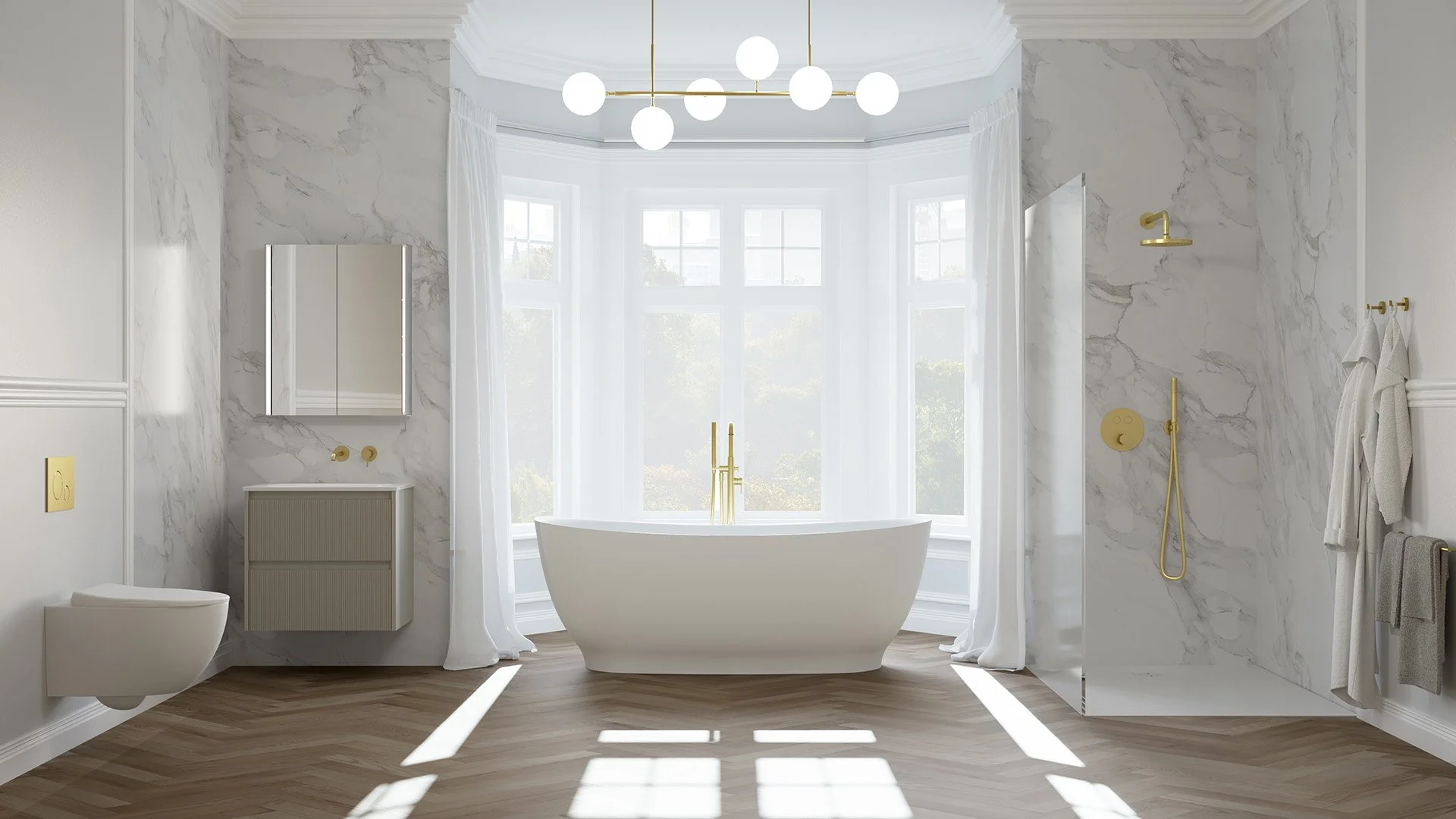What Is Photorealistic CGI?
And why does it matter for kbb brands?
Photorealistic CGI (computer-generated imagery) is imagery that has been fabricated entirely in a digital space to such a high level of quality, style and detail that it is indistinguishable from a traditional photograph. Computer-generated imagery has been around for years now, but it has taken advancements in both technology and operator skill to be able to achieve results that are truly unrecognisable as fabricated images.
Why does photorealism in CGI matter?
In short, because of trust. Seeing is believing, and in sales and marketing, the trust interaction between a consumer and a brand can be won or lost on the strength of their imagery. This is especially important for brands in the kitchens, bathrooms, home decor, and white goods sectors, where the high value of items mean consumers base much of their purchasing decisions on social validation, research, and reassurances of quality. Any flaw in an image, any hint of disconnect between what the consumer sees and expects to receive can erode trust and throw up barriers to purchase.
So why not just opt for traditional product imagery?
Studio shoots and roomsets still have a very valid place in many brands’ content production schedules. However, CGI provides both cost efficiencies and future-proofing, thanks to the way that it’s produced. Images can be updated, removing out of date product and replacing new lines almost instantly. Roomset photography gives you a window of opportunity - you need to work hard to get all the shots you need whilst the set is in place. By working with computer-generated roomsets, you can produce multiple rooms simultaneously, swapping in and out product as you need for as long as you want, whilst achieving the same high-quality images for your marketing communication needs.
Why do Homeware Brands Need Photorealistic CGI?
For homeware brands, styling is everything. Presenting product in a styled lifestyle setting produces aspiration, which prompts consumers to buy. However, style is transient; what was en vogue at last year’s set shoot might be looking dated by this season. With CGI, you can change and adapt imagery to meet new trends, often within a day. Not only does this give brands the flexibility to update imagery at a much reduced cost, it allows marketing teams to react to trends and keep your brand both visible and relevant, which is ever more important with consumers who expect a huge quantity of visual output.
How does Photorealistic CGI Get Your Products To Market Faster?
Photorealistic CGI can help bridge the gap between production and sales in a meaningful way, getting product to market faster than ever before. This is especially true for large, complex product ranges that may be manufactured internationally - waiting for finished product to be shipped for photography can cause lengthy, costly delays to your marketing strategy. With accurate measurements, CAD drawings, and design schemas, we can create realistic CGI product imagery that will meet all your marketing communication needs and get product in-front of consumers before it has even rolled off the production line.
How can Photorealistic CGI future-proof your marketing?
Computer-generated imagery is the future of product image content. CGI renders paired with AR technology creates lifesize bathroom layouts, allowing customers to plan their dream bathroom or kitchen in real time. Selecting colourways, sizes, shower screens, even floor tiles can become an interactive experience that engages your customers like never before.
Spot the difference
Which one of these room sets is completely CGI, and which one is a traditionally built and shot room set?
Find the answer below…
FREQUENTLY ASKED QUESTIONS
-
Photorealistic CGI (computer-generated imagery) is digital artwork created using advanced 3D rendering techniques that replicates real-world photography with such precision that it becomes virtually indistinguishable from actual photos. It uses simulated lighting, textures, and materials to deliver highly realistic results.
-
Photorealism builds consumer trust. In sectors like bathrooms, kitchens, and homewares, where purchases are often high-value and research-driven, realistic visuals help customers feel confident about product quality – ultimately influencing buying decisions.
-
While studio shoots offer authenticity, especially with products such as clothing and accessories that needs modelling, CGI provides greater flexibility, cost-efficiency, and speed. You can update imagery without rebuilding sets, work across multiple virtual roomsets at once, and easily adapt visuals to changing product lines or seasonal trends.
-
Yes. With CAD files and product specifications, photorealistic computer-generated product visuals can be generated before manufacturing is complete – accelerating campaigns and reducing delays caused by physical photoshoots or product shipping.
-
Absolutely. Once assets are created, they can be reused, restyled, or updated quickly – reducing the need for costly reshoots. Brands can respond to seasonal trends or marketing needs without incurring additional studio setup costs.
-
Photorealistic CGI can be integrated into AR (augmented reality) and VR (virtual reality) experiences, allowing customers to interact with products in virtual spaces. From lifesize bathroom planners to 360° product viewers, CGI content scales with new technologies.
-
Yes. Photorealistic CGI can be exported in various formats and resolutions, making it ideal for use in web, social, print, video, e-commerce, and immersive experiences like AR and VR.
-
Extremely. From lighting and props to textures and room set design, every element of a CGI render can be customised to align with your brand’s look and feel – ensuring consistency across campaigns.
Image A is completely CGI-generated; image B is a traditionally built room set shot on camera.



